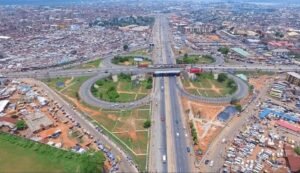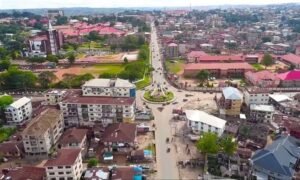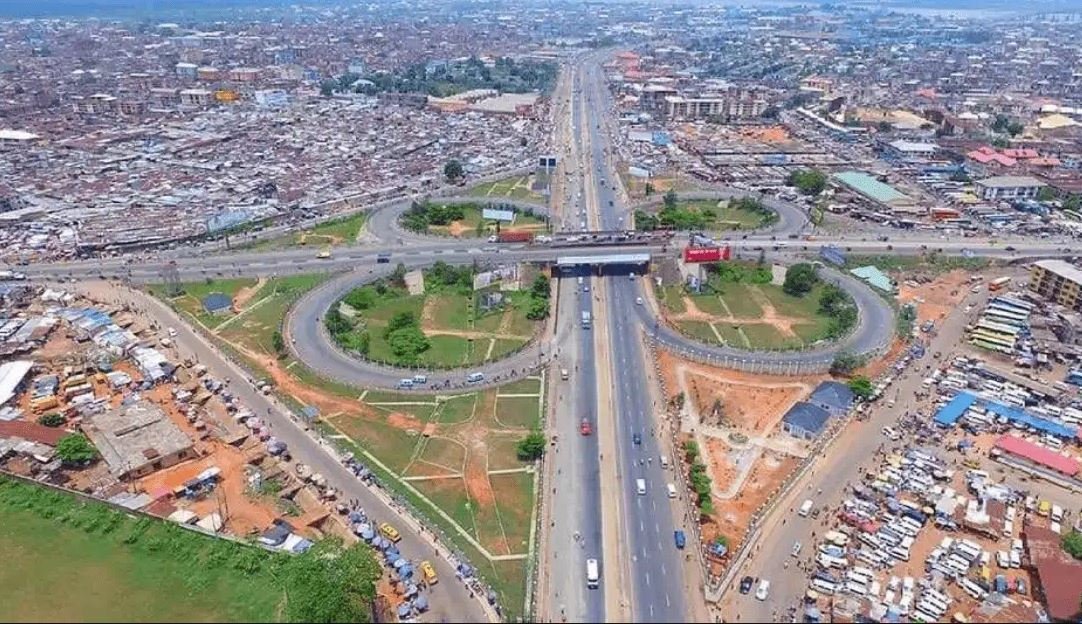This guide provides a list of the top three richest states In Igbo land with a comprehensive overview of the economic health and prosperity of each state:
READ ALSO: Top 10 Most Developed States In Nigeria
| State | Capital City | Annual Revenue (Approx.) |
|---|---|---|
| Anambra | Awka | ₦30.9 billion |
| Abia | Umuahia | ₦21.5 billion |
| Imo | Owerri | ₦18.2 billion |
1. Anambra State

Anambra State, located in southeastern Nigeria, is one of the richest states in Igbo land. It is popular for its rich history, diverse culture, and strong economic standing.
With over 11 million people, Anambra is the eighth most populated state in Nigeria and the second most densely populated, after Lagos.
The state’s name comes from the Anambra River, also called Omambala, a tributary of the famous River Niger. The climate in Anambra is tropical, with wet and dry seasons, and the average yearly temperature is about 28.99°C (84.18°F).
Also, the area gets around 212.36 millimeters (8.36 inches) of rainfall yearly. However, Anambra is mainly inhabited by the Igbo people, who make up about 98% of the population.
The state is rich in culture, with many festivals and traditions that showcase Igbo music, dance, and colorful attire. Economically, Anambra is a powerhouse.
The state has a booming business sector and a growing industrial base. It is also rich in natural resources such as crude oil, natural gas, bauxite, and ceramic.
Most of the state’s land is productive, making agriculture a key part of its economy. Anambra’s major cities, like Onitsha, Nnewi, and Awka, are essential for trade and industry.
Onitsha is a historic port city that hosts the largest market in Africa, attracting traders from across the continent. Nnewi, often called the “Japan of Africa,” is known for its manufacturing industry, producing goods like automobiles, motorcycles, and spare parts.
Education is another strong point for Anambra. The state has many reputable institutions, including Nnamdi Azikiwe University (UNIZIK), Anambra State University, and the Federal Polytechnic, Oko.
Anambra has one of the highest literacy rates in Nigeria, with many children enrolled in both primary and secondary schools. The state is also improving in areas like infrastructure, healthcare, and security.
READ ALSO: Top 10 Richest States In Nigeria By GDP (2024)
2. Abia State

Abia State was created in 1991 from the former Imo State and is part of the Niger Delta region. Its economy is diverse, with industries in manufacturing, trade, agriculture, and oil and gas.
The state covers an area of about 6,320 square kilometers and shares borders with Anambra, Enugu, and Ebonyi states to the north, Imo State to the west, Cross River and Akwa Ibom state to the east, and Rivers State to the south.
The southern part of Abia is a riverine area with tropical rainforests, while the rest is a high plain covered with savanna.
Also, the population of Abia State is over 2.4 million people, most of whom are of Igbo ethnicity and practice Christianity.
Abia’s economy is driven by several sectors. One of the most important is manufacturing, especially in Aba, a major industrial hub.
Aba is known for producing textiles, footwear, plastics, cement, pharmaceuticals, and cosmetics. Abia’s oil and gas industry also plays an essential part, contributing over 39% to the state’s GDP.
Agriculture is another major sector, employing about 70% of the population. Important crops include yams, cassava, maize, plantains, and oil palm, which is a cash crop.
The state also has two major power plants, Alaoji Power Plant and Geometric Power Plant, which are aimed at solving the power supply issues.
Abia is home to four universities: Michael Okpara University of Agriculture, Abia State University, Gregory University, and Rhema University.
Healthcare is also a priority, with major hospitals like the Federal Medical Center in Umuahia and Abia State University Teaching Hospital in Aba.
Under the leadership of Governor Dr. Alex Otti, the state has seen efforts to improve the economy, infrastructure, and governance. Abia’s capital is Umuahia, but Aba remains the economic heartbeat of the state.
READ ALSO: Top 10 Poorest States In Nigeria (2024)
3. Imo State

Imo State is considered one of the richest states in Igbo land. Created in 1976, it was carved out of the old East-Central State and is named after the Imo River, which flows through the region.
The state capital is Owerri, which is also the largest city in Imo. This city is not just a cultural center but also a major economic hub.
Imo State covers about 5,100 square kilometers, and It shares borders with Anambra State to the north, Abia State to the east, and Rivers State to the south and west.
As of 2022, Imo has a population of over 5.4 million people, making it one of the most densely populated states in Nigeria.
The people of Imo are mostly Igbo, and while English is the official language, Igbo is spoken by nearly everyone. Imo State is blessed with a variety of natural resources.
It has over 163 oil wells, making crude oil one of its key resources. These oil wells are spread across different local government areas, such as Ohaji/Egbema and Oguta.
Besides oil, the state also has deposits of natural gas, lead, and zinc. Imo’s rich soil supports agriculture, with crops like yams, cassava, and palm oil being widely grown.
Its forests are filled with valuable timber trees like iroko and mahogany. The economy of Imo State is diverse, with home to over 2,000 factories that produce goods like pharmaceuticals, food products, and more.
Big companies, including Nigerian Breweries, have a presence in the state, which has contributed to its industrial growth.


I love imo state
I love anambra, anambra or nothing
I like this guy
I love Abia,
if u do nothing, nothing happens.
I love imo my state
Anambra the richest
Anambra is fine
I love Abia so we are even higher than Imo nice
imo state is the richest
You guys are doing pasha Enugu state is the richest,Enugu or nothing
I’m with u dear
I love Ebonyi despite❤️
I love my Imo state ooo